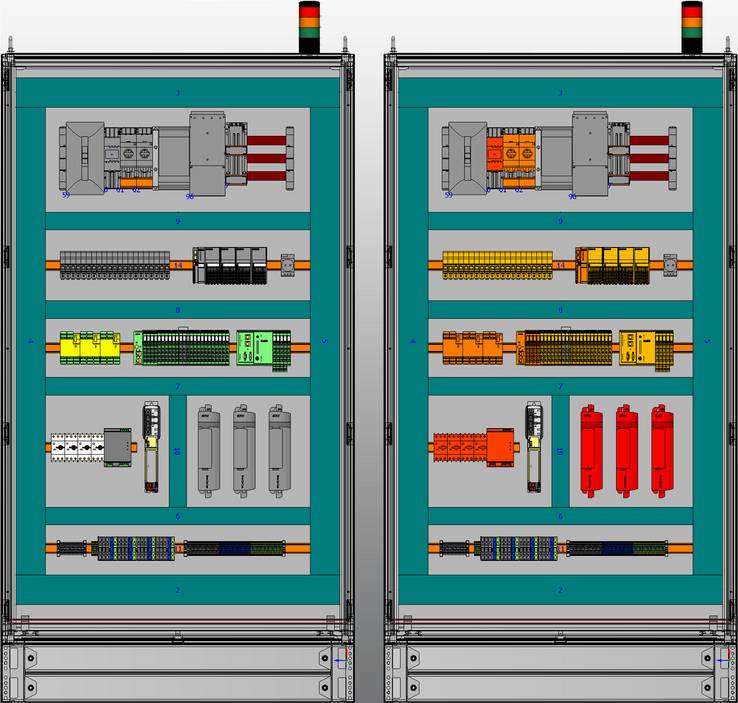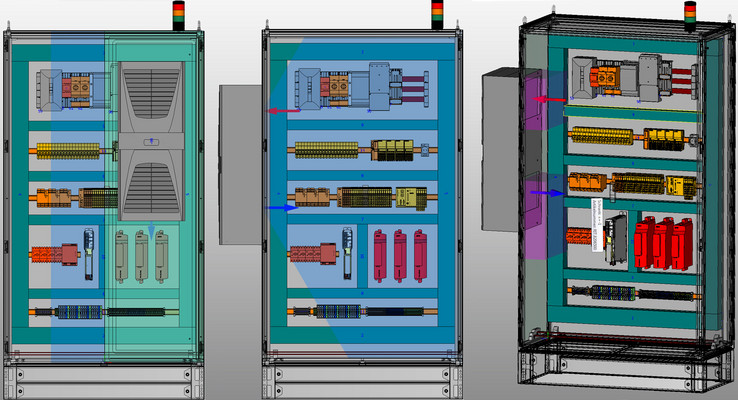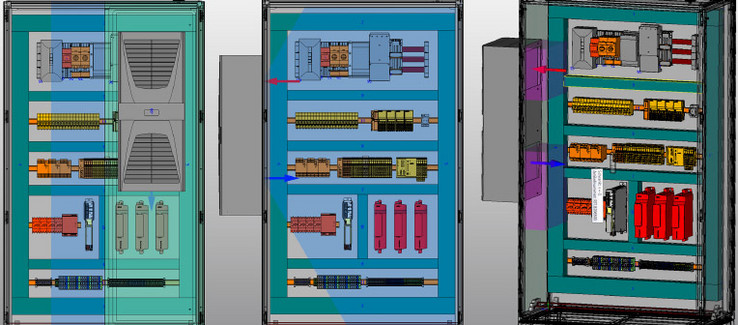Next step: „Thermal Design Integration“
“Thermal Design Integration” – new possibilities for the standardised design of energy-efficent control cabinets with climate control systems.
At the 2015 SPS IPC Drives, EPLAN, Phoenix Contact and Rittal are presenting “Thermal Design Integration” – new possibilities for the standardised design of energy-efficent control cabinets with climate control systems. This integrated virtual engineering means companies can avoid design errors with the climate control systems and prevent unnecessary downtimes and service calls, thereby reducing costs while increasing process quality. MNuremberg/Monheim, Germany, 24 November 2015 – At the SPS IPC Drives, cooperations partners EPLAN, Phoenix Contact and Rittal are presenting Thermal Design Integration, an integrated concept consisting of digital product data, software-based project planning and newly developed climate control solutions. It promises users in control cabinet engineering powerful and lasting improvements in the areas of design, cooling and trouble-free operation of control cabinets. Designers can verify their assembly layouts with respect to climate control considerations and interactively make provisions for the best possible climate control solution. Moving forward, virtual 3D design planning in EPLAN Pro Panel will be expanded with targeted special functions. The key goal is to communicate to control cabinet designers the functionality, performance limits and integration possibilities of the individual climate control system variations so that they can develop the most efficient climate control solution as intuitively and as simply as possible.
Preventing “hot spots”
Designers need an overview of where the components that especially require cooling are located within the control cabinet to optimally place climate control components. It is important to avoid so-called hot spots from the very start. EPLAN Pro Panel will have new functionality beginning in fall 2016 that colours installed components differently according to their heat-load densities, which are calculated on the basis of the maximum heat loss in relation to the size of the installed component. In addition to the information about each component’s heat loss, designers also receive information about the distribution of the heat-load density within the entire cabinet. If there’s an imbalance in the distribution, this can be corrected at any time with targeted changes in the mounting layout. All of the required information is made available as device data through EPLAN Data Portal – for active components as well as for terminals, as an example. For this, Phoenix Contact is the first manufacturer to provide relevant device data for integrating its components into EPLAN Data Portal, including values such as maximum heat loss, minimum spacing and flow directions if the device has its own ventilation.
Optimal climate control and targeted cooling
For ideal and trouble-free air circulation within the control cabinet, designers require visual assistance to compare components’ mounting positions – meaning their exact location in the cabinet – with the climate control system’s determining factors. Spaces that must remain free for air circulation purposes and the areas with ideal climatic conditions are graphically displayed when using Rittal climate control solutions. Spaces blocked off for air circulation cannot be used for mounting components because the climate control components will otherwise be siginificantly impeded in delivering the necessary volumes of cool air. This in turn can lead to problems with the installed switchgear devices or electronic components. For instance, devices placed too close to the cold air current are put under extreme thermal stress. This significantly reduces electronic/electrical components’ service lives and can also lead to unplanned downtimes during operations.
Visualising airflow and heat loss
The optimally climate-controlled area describes the area that a climate control device can dependably cool due to its flow rate capacity. EPLAN Pro Panel correspondingly visualises the relevant device parametres – for example the maximum thrust distance for the cooling air as well as the angle of the air flowing into the device and/or out of the device. This also takes into account the fact that the speed of the flow decreases with distance from the device and thus the device’s thrust distance is limited. Only through the use of an air diverter can turbulent flow regions be eliminated so that the cooling air enters into the cabinet parallel to the door. The device-specific accessories necessary for this are factored in for notification about the optimal climate-controlled area. In the future, all the necessary data and information for this will be included as part of the product data of the respective Rittal climate control components and made available through EPLAN Data Portal. The use of EPLAN Pro Panel allows the exact verification for a variety test runs.
In Conclusion
With “Thermal Design Integration”, EPLAN, Phoenix Contact and Rittal are offering a new approach for secure and efficient designing of climate control measures in control cabinet and switchgear engineering. Companies benefit from an increase in engineering efficiency and long-term advantages in terms of an integrated, virtual product design development process.

Representation of the heat-loss distribution within a control cabinet. At left: enclosure as seen normally. At right: display of the heat-loss distribution. A component’s colour corresponds to its heat-load density – the components shown in red are those that should preferentially be cooled.
© Rittal Foundation

At left: for door construction, the optimal climate-controlled area does not reach the cabinet wall. Middle: for side-wall mounting on the left, all the components are located in the optimally cooled area. At right: the spaces blocked off for air circulation are free from obstacles.
© Rittal Foundation


